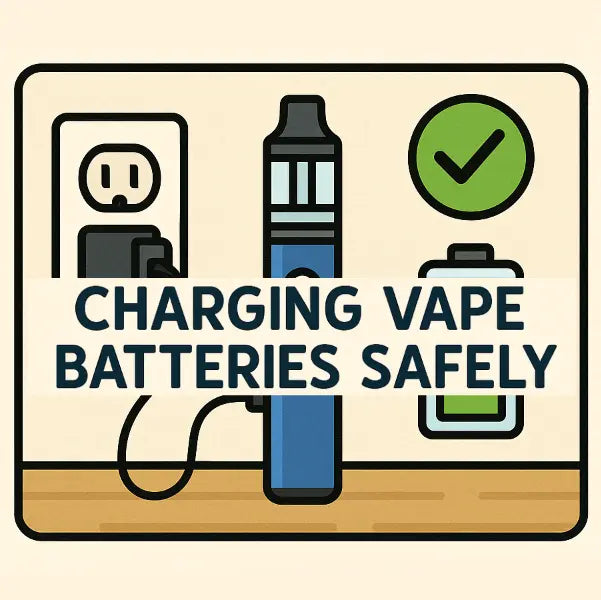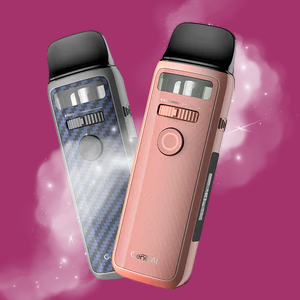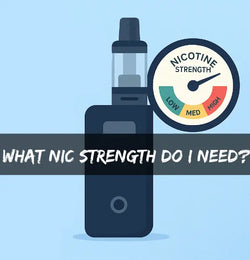
Charging Vape Kits and Vape Batteries Safely: A Practical Guide
|
|
Time to read 5 min
Christmas & New Year Shipping Schedule 2025/26 now available to view HERE
Our Vaper Level system makes it easier for you to find the right vape products for you. Each product page is tagged with a recommended experience level which is colour coded and easily recognisable. View out full guide to find out what level you are!

Absolute beginners looking for a simple device to make the switch from smoking.

Moderate experience with vaping, confidence: changing coils and requiring adjustable settings.

Experienced and knowledgeable vapers needing advanced features or rebuildables.
Our advisors are available: Monday-Friday, 8.30AM-5.30PM
Contact Options
Follow @evovapinguk for exclusive offers and updates:
Submit our quick and easy registration form to get started as an Evolution Vaping wholesale customer!










over £20 + Same day dispatch
WITH EVERY PURCHASE
Written by: Christian Jones
|
|
Time to read 5 min
Table of contents
Charging your vape should be the simplest part of vaping life. Plug it in, walk away, job done, right? Wrong. That hands-off attitude is how you end up with a toasted battery - or worse, a melted sofa cushion. Charging vape kits and vape batteries safely isn’t just good practice - it’s vital. And unlike trying to fold a fitted sheet, it’s surprisingly easy if you know what you’re doing. Let’s walk through how to keep your kit charged, your batteries healthy, and your eyebrows exactly where they belong.
You wouldn’t microwave a fork. You wouldn’t charge your phone in the bath. So why treat your vape gear any differently? Using dodgy cables, overcharging, or ignoring manufacturer instructions can damage your battery, shorten its lifespan, or turn it into a pocket-sized fire hazard.
Yes, that mystery cable in the bottom drawer might fit your vape. That doesn’t mean it should. Always use the charger provided by the manufacturer or one that’s explicitly compatible with your device. Cheap, third-party chargers may save you a few quid now but could cost you a new kit - or worse - later.
😎Pro tip: Check the output voltage and current rating. It should match what your vape requires. Using the wrong charger isn’t just inefficient - it can be dangerous.
This one’s criminally underrated. Most modern vape kits are designed to charge at a specific amperage. That’s the current flow your battery is built to safely handle. Exceeding that limit? It’s like forcing a small elevator to carry triple its capacity. It might move… for a while. But the strain wears everything down, and eventually, something gives.
Charging vape kits and vape batteries safely means knowing your kit’s amp limit (usually listed in the manual or manufacturer’s site) and ensuring your charger doesn’t pump out more than that. Over-ampering your device can:
If the manual says 1A max, then 1A it is. Higher isn’t better here - it’s risky.
Charging overnight? Bad idea. Most modern vape kits have built-in overcharge protection but relying on that is like depending on a chocolate teapot to stay watertight. Charging vape kits and vape batteries safely means unplugging once it’s full. If your vape takes a couple of hours to charge, set a timer or a reminder. You’re not just saving power - you’re protecting your investment.
Some kits come with removable batteries, and while this gives you more flexibility, it also gives you more responsibility. Remember to only use approved vape batteries purchased from a dedicated vape shop!
A decent charger does more than fill your batteries. It monitors heat, shuts off when full, and balances the charge across cells. That £3.99 no-name bargain from a random online shop? Not your friend.
Strong safety features: Look for chargers with built-in safety functions like reverse polarity protection and overheat monitoring.
If you’re seeing any of these, stop using the battery immediately. Dispose of it at a proper recycling centre - not your kitchen bin.
Regular inspection is key to charging vape kits and vape batteries safely. It takes thirty seconds and could save you a world of bother.
Here’s the bit where we get serious. Because for all the jokes and analogies, the risk of mishandling vape charging isn’t theoretical - it’s already happened. And not just once.
Take Gainsborough, Lincolnshire, for example. A vape left charging on a bed didn’t just overheat - it exploded. The resulting fire consumed four homes and landed three people in hospital. That’s not just a cautionary tale - it’s a full-blown disaster.
In Chelmsford, Essex, a vape charger sparked a bedroom fire, prompting local fire services to raise the alarm about rising cases linked to unsafe charging habits. The culprit? Unattended charging and questionable equipment.
And over in Herefordshire and Worcestershire, fire crews reported 40 fires over five years tied to rechargeable lithium-ion batteries, with a notable number involving vapes. Many of those were the result of incompatible chargers, damaged batteries, or devices left plugged in and forgotten.
These stories aren’t scare tactics - they’re reality. And they underline a single truth: charging vape kits and vape batteries safely isn’t optional. It’s essential.
Let that sink in next time you’re tempted to leave your vape charging overnight next to your bed. Safe charging isn’t just about protecting your kit - it’s about protecting everything and everyone around you.
Never leave charging devices unattended.
Keep away from flammable surfaces (bedding, pillows, sofas - yes, really).
Don’t put on charge with wet hands or near water.
Avoid extreme temperatures - don’t leave it charging on the dashboard during a heatwave.
Read your manual and stick to AMP limits and only use the correct cables / charging bays.
Let’s not overcomplicate things. Charging vape kits and vape batteries safely boils down to this: read the manual, use the right gear, and treat your vape like the valuable piece of tech it is. Respect the process and you’ll get better battery life, consistent performance, and one less thing to worry about.
So go ahead - plug in, chill out, and vape responsibly. Just maybe don’t do it in bed...
Some kits support pass-through charging, but many don’t. Check the manual.
It can be. Fast charging generates more heat, and heat is the enemy of battery longevity. Your kit may support fast charging please check the manual for your amp limits.
It’s not ideal. These ports might not provide stable voltage, which could damage your device. However they generally will not be able to over charge your device. Always check your laptops instructions for what AMP they can output via USB charging.
Need help?




